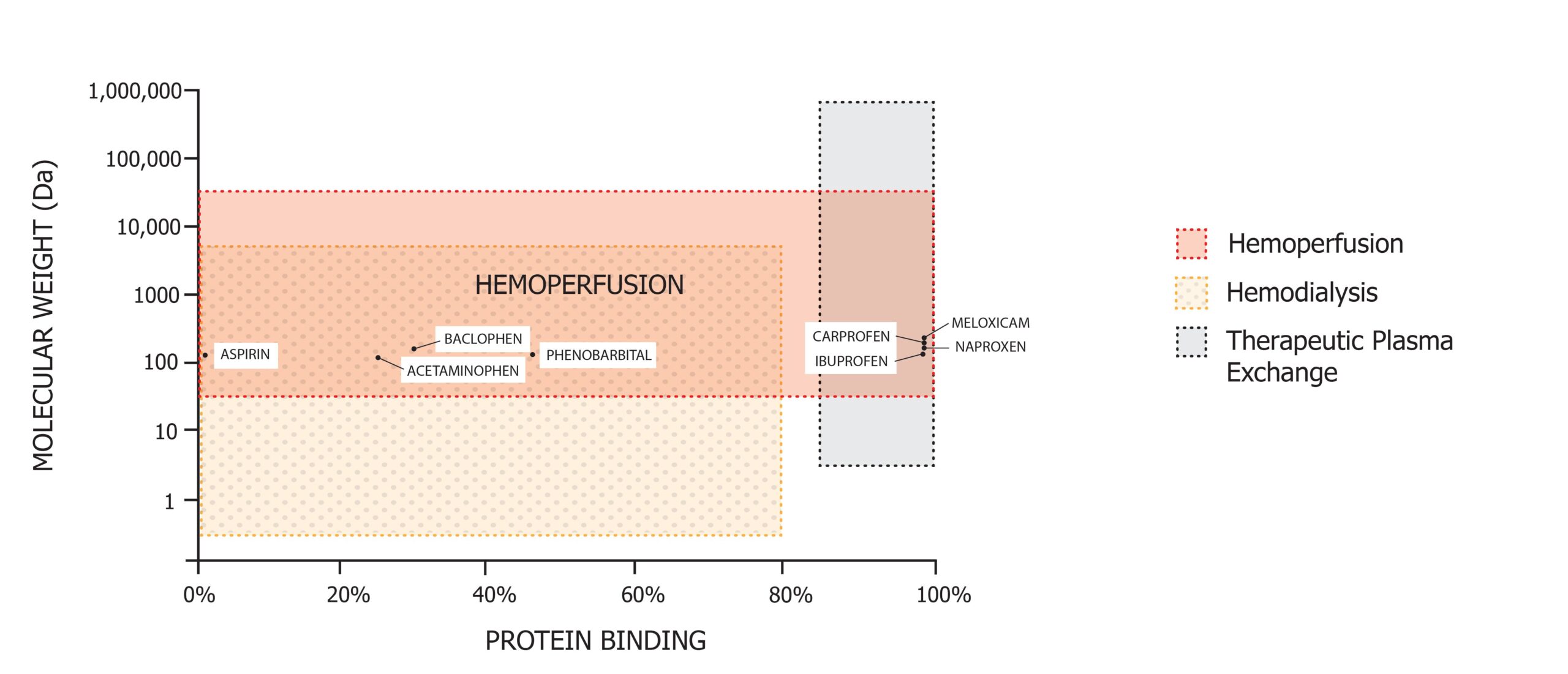Hemoperfusion: The Key to Saving Lives
Extracorporeal therapy for the rapid removal of toxins
What is Extracorporeal Therapy?
Extracorporeal (outside of the body) therapies are most commonly performed by continuously withdrawing and circulating blood through a circuit before returning the blood to the patient. Within this circuit can be a number of different devices that remove components of blood that are in dysregulation and/or caused by a disease condition. For example, hemodialysis is used to remove uremic toxins dysregulated as a result of decreased kidney function, and hemoperfusion can be used to remove a drug in the case of overdose.
What is Hemoperfusion?
Hemoperfusion (HP) is an extracorporeal therapy that uses an adsorption column to filter out specific targets from circulation. There can be many applications for hemoperfusion but most commonly is used for drug removal in the case of overdose. With modern hemoperfusion devices it is quite possible the list of applications will eventually grow to include inflammatory and autoimmune diseases. In veterinary medicine extracorporeal therapies have been limited to a very small but growing list of specialty hospitals and teaching universities in the US and around the world.
How do Veterinarians Perform Hemoperfusion?
Hemoperfusion is performed by placing a dual lumen dialysis catheter in a central vein, most commonly the right jugular vein. These catheters have an inlet and return line which allows for blood to be continuously withdrawn and returned. The blood is pumped out of the vein and through a tubing circuit which contains an HP column which filters the blood for specific molecules associated with overdose or disease. The purified blood then is returned to the patient.
What is the Success Rate of Hemoperfusion?
While the success rate of hemoperfusion is generally very good, the outcome depends upon a number of factors. For drug overdose or toxin exposure it depends on what the drug/toxin is, the dose ingested, the time since exposure, the size of the animal, species, and other factors. For other disease conditions it will depend on the disease itself, the severity and the nature or ability of the disease to regenerate. Hemoperfusion is a conservative therapy that does no harm while providing new options for pets with severe intoxications.
Is Hemoperfusion the Same as Dialysis?
While there are some basic similarities, hemoperfusion and dialysis are not the same. While observing both treatments you might see very little difference, the fundamentals of how they work are very different. Dialysis relies upon diffusion and convection of molecules across a membrane and concentration gradients between the dialysate on one side of the membrane and blood on the other. Hemoperfusion on the other hand has an adsorbent with direct blood contact that will adsorb solutes that it is designed to remove. An example, hemodialysis is very good at removing water soluble solutes, HP is not. HP is very good at removing protein bound solutes, hemodialysis is not.
When is Hemoperfusion Used vs. Dialysis?

Hemoperfusion (HP) is the most versatile extracorporeal therapy for treating common toxicities, able to treat a wider range than hemodialysis (HD) or therapeutic plasma exchange (TPE).
Each treatment modality has its own strengths and weaknesses. There are many factors in deciding which is best for a particular patient. Some of the criteria that a doctor considers for the solute to be removed is protein binding, volume of distribution, water/lipid solubility, and molecular weight to name a few. In some situations either would work, acetaminophen toxicity for example. In some disease conditions a combined HD/HP therapy might be appropriate.
Our 1-1-1 Life Saving Formula

1 AimaLojic Blood
Purification Filter

1 Treatment

1 Life Saved

